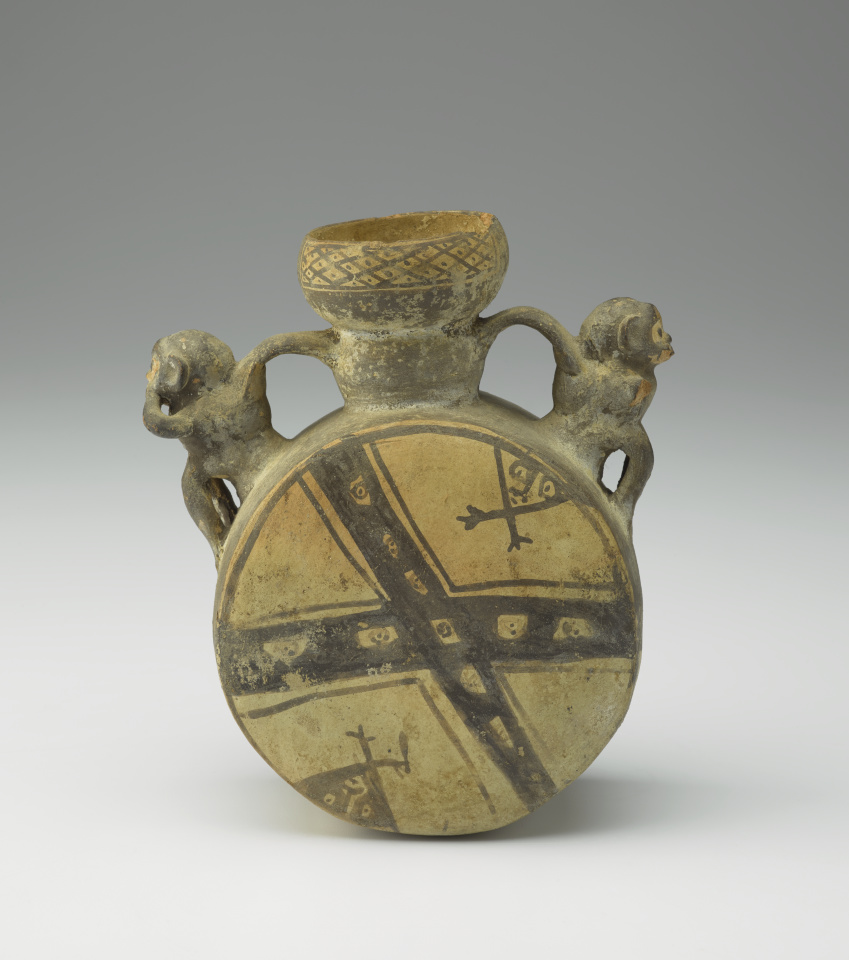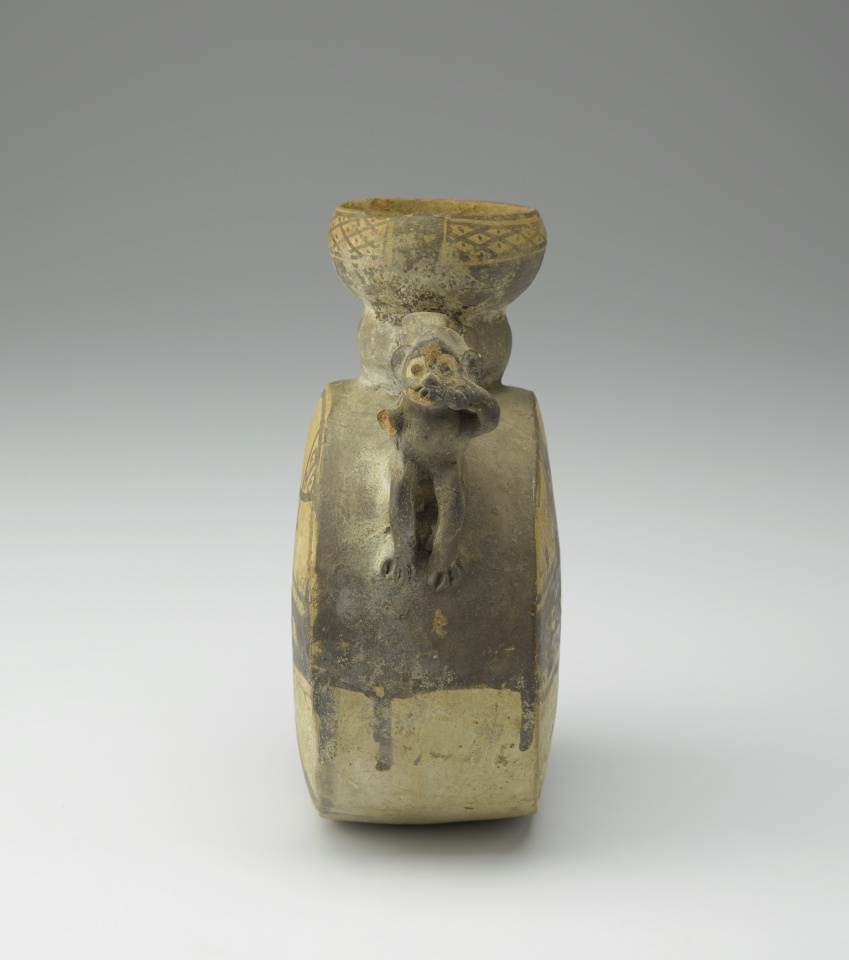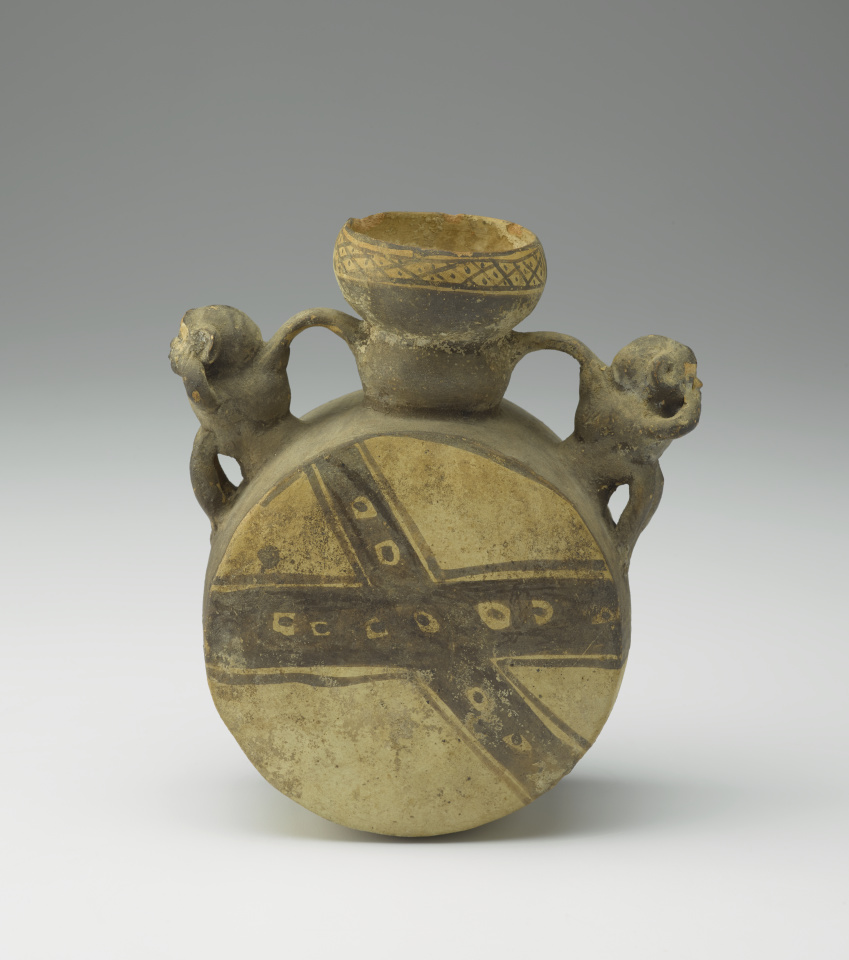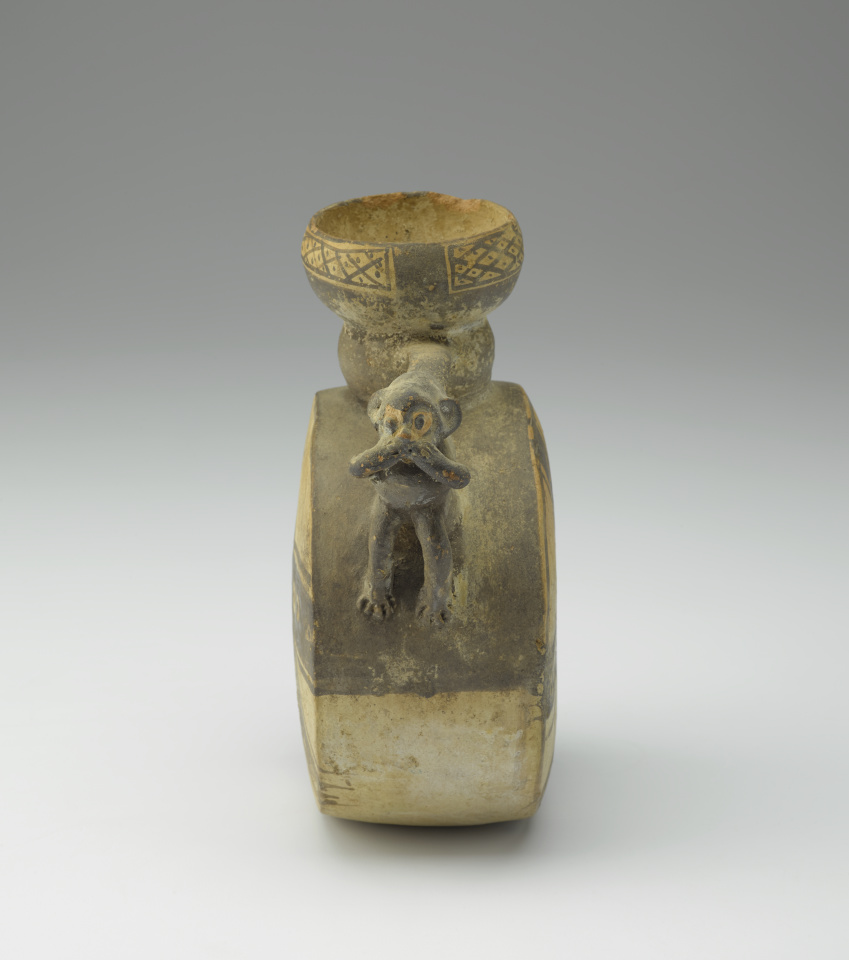Vessel with Monkey Figures on Handle (work of art)
Artwork Info
About
Key Ideas
- This ceramic vessel is decorated with contrasting brown and cream-colored paint in geometric patterns. A pair of monkeys sit on the base of the vessel with their hands covering their mouths, and the tails of the monkeys curve up to connect to the neck, serving as handles.
- A vessel like this pottery “canteen” would have been used to hold water, which was essential for survival in the desert climate in which this piece was created.
- The Chancay people lived in a region of Peru known for its hot and dry climate, but with small oases (fertile areas in a desert where water is found) that were connected to distant areas of the Andes. This allowed for the exchange of goods with other communities.
- Monkeys are not native to the central coast of Peru. They were most likely brought to the region as pets.
Learn More
The Chancay people lived along the central coast of Peru in a hot, dry region. Portable water vessels like this pottery “canteen” were common in this culture because having water to drink in hot temperatures is essential to survival. The area in which the Chancay lived also had fertile valleys and rivers that connected with distant areas of the Andes. This allowed the Chancay people to interact with other cultures and communities and to trade plants, food, and other agricultural products, as well as rare and exotic goods.
The surface of this ceramic vessel is decorated with brown and cream-colored paint in geometric, textile-inspired patterns. The vessel itself has a round form with a wide-mouthed spout branching off a narrow neck. On either side of the neck (and serving as handles) are a pair of monkeys, both holding their hands to their mouths. Their tails curve upward and connect with the neck of the vessel.
Monkeys are not native to the central coast of Peru. Archaeologists suggest that they were brought to this region as pets from far away, probably from the Amazon rainforest.
Additional Resources
Resources for Teachers:
- Read more about Chancay pottery from the Museo Larco.
- View a similar vessel at the Fowler Museum at UCLA.
- View another example of Chancay pottery at The Dallas Museum of Art.
Resources for Students:
- Learn interesting facts about Peru.
- Read more about Peru.
- Watch a video about squirrel monkeys, a type of monkey found in the Amazon rainforest.




